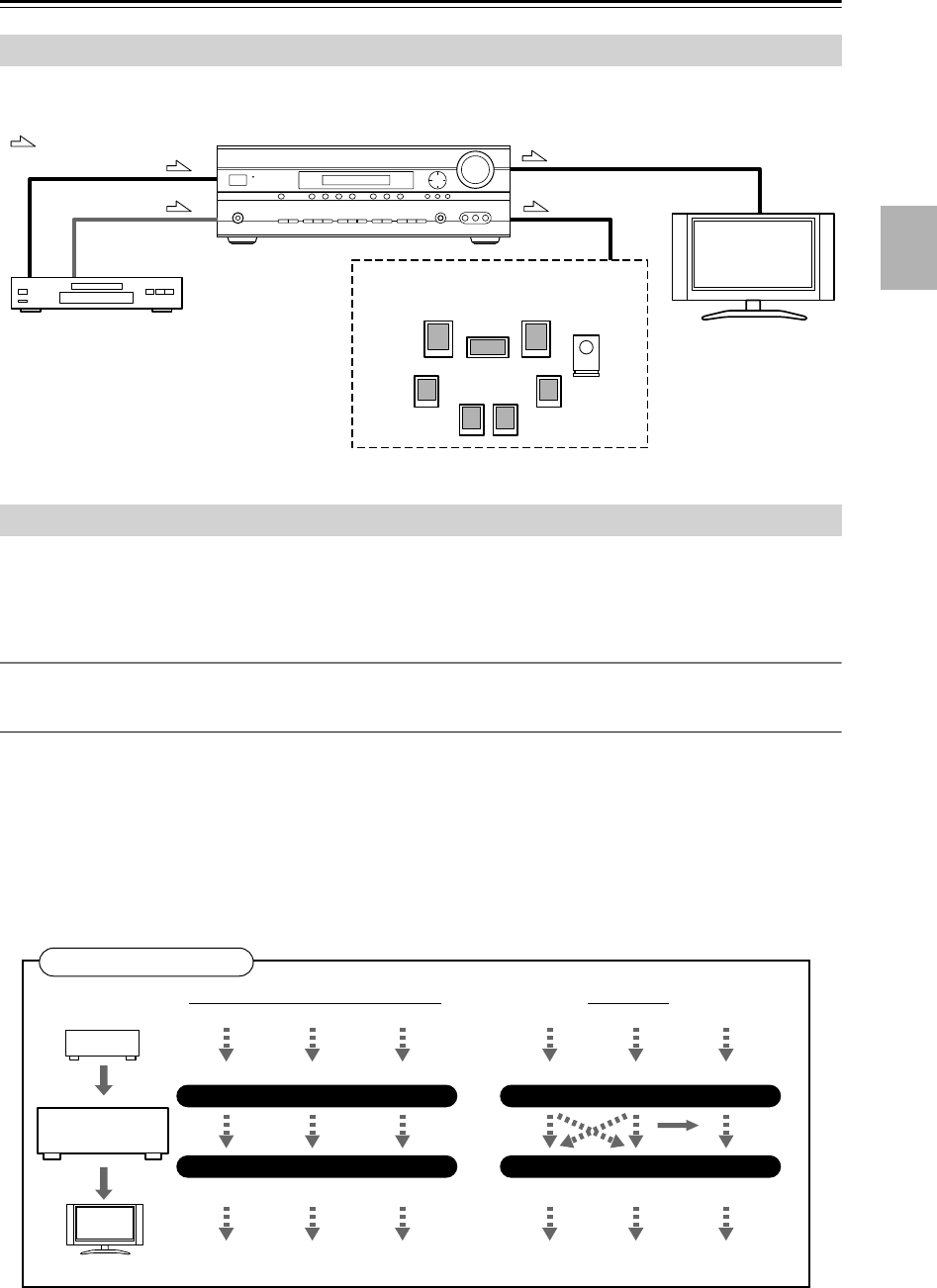
23
Connecting Your Components
—Continued
By connecting both the audio and video outputs of your DVD player and other AV components to the AV receiver, you
can switch the audio and video signals simultaneously simply by changing the input source on the AV receiver.
The AV receiver supports several connection formats for compatibility with a wide range of AV equipment. The format
you choose will depend on the formats supported by your other components. Use the following sections as a guide.
For video components, such as a DVD player, you must make an audio connection and a video connection.
Audio Connection Formats
When choosing a connection format, bear in mind that the AV receiver doesn’t convert between formats.
Video Connection Formats
For TX-SR505/TX-SR505E/TX-SR8550
Video equipment can be connected by using any one of
the following video connection formats: composite
video, S-Video, or component video, the latter offering
the best picture quality.
When choosing a connection format, bear in mind that
the AV receiver doesn’t convert between formats, so only
outputs of the same format as the input will output the
signal.
For TX-SR575
Video equipment can be connected to the AV receiver by
using any one of the following video connection formats:
composite video, S-Video, or component video, the lat-
ter offering the best picture quality.
Composite video to S-Video and S-Video to composite
video conversion only applies to the MONITOR OUT V
and S outputs, not the VCR/DVR OUT V and S outputs.
Connecting Audio and Video Signals to the AV Receiver
Which Connections Should I Use?
: Signal Flow
Video
Video
Audio
Speakers (see page 19 for hookup
details)
DVD player, etc.
TV, projector,
etc.
Audio
IN
MONITOR OUT
IN
MONITOR OUT
DVD player, etc.
AV Receiver
TV, projector, etc.
TX-SR505/TX-SR505E/TX-SR8550 TX-SR575
Composite S-Video Component
page 38
Composite S-Video Component
Composite S-Video Component
Composite S-Video Component
Video Signal Flow Chart


















